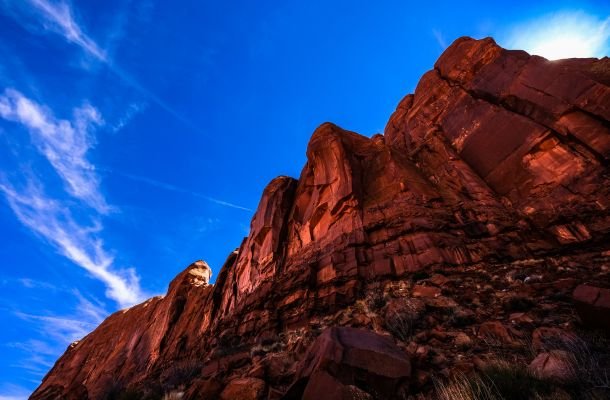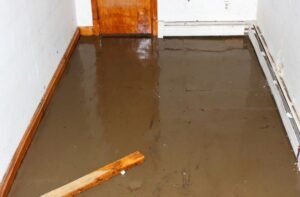Geology of Albuquerque, NM

Albuquerque, New Mexico, is not only a city rich in cultural heritage and history but also a location with fascinating geological features. The geology of Albuquerque is a blend of ancient formations, volcanic activity, and river systems that have shaped the landscape over millions of years. In this comprehensive guide, we’ll explore the geologic history, formations, landforms, and natural resources that make Albuquerque’s geology unique.
Geologic History of Albuquerque
Precambrian Basement Rocks
The geologic history of Albuquerque begins in the Precambrian era, over 1.4 billion years ago. The oldest rocks in the area are part of the Precambrian basement, which consists primarily of metamorphic and igneous rocks. These rocks form the foundation of the Earth’s crust and are exposed in the nearby Sandia Mountains.
- Types of Rocks: The Precambrian rocks are mainly composed of granite, schist, and gneiss.
- Formation Process: These rocks were formed deep within the Earth’s crust and were later uplifted and exposed through tectonic processes.
Paleozoic Era
The Paleozoic era (541 to 252 million years ago) brought significant changes to the region. During this time, Albuquerque was submerged under a shallow sea, leading to the deposition of sedimentary rocks such as limestone, sandstone, and shale.
- Fossil Evidence: The sedimentary rocks from this era contain fossils of marine organisms, including brachiopods, trilobites, and corals.
- Geologic Formations: Notable formations from the Paleozoic in the Albuquerque area include the Sandia Formation and the Madera Group.
Mesozoic Era
The Mesozoic era (252 to 66 million years ago) was a time of significant tectonic activity. The region experienced the uplift of the Rocky Mountains to the north, and Albuquerque’s landscape began to take shape.
- Triassic to Jurassic Periods: The Albuquerque area was dominated by rivers and floodplains, leading to the deposition of red sandstones and mudstones, as seen in the Chinle Formation.
- Cretaceous Period: During the late Mesozoic, a shallow sea once again covered the region, resulting in the deposition of marine sediments and the formation of the Dakota Sandstone and Mancos Shale.
Cenozoic Era
The Cenozoic era (66 million years ago to the present) is perhaps the most significant in shaping Albuquerque’s current landscape. This era is characterized by volcanic activity, tectonic movements, and the development of the Rio Grande Rift.
- Volcanism: The Albuquerque volcanic field is part of the larger Jemez Lineament, a zone of volcanic activity that stretches across New Mexico.
- Rio Grande Rift: The Rio Grande Rift is a major tectonic feature that runs through central New Mexico, including Albuquerque. The rift is responsible for the formation of the Rio Grande Valley, which is a prominent feature in the city.
Major Geologic Formations and Landforms
Sandia Mountains
One of the most prominent geological features in Albuquerque is the Sandia Mountains. These mountains are part of the larger Rocky Mountain range and provide a stunning backdrop to the city.
- Formation: The Sandia Mountains were formed through a combination of tectonic uplift and erosion. The Precambrian basement rocks were uplifted during the Laramide Orogeny, a mountain-building event that occurred around 70 to 40 million years ago.
- Geology: The mountains are composed of a mix of granite, gneiss, and schist, with some areas also containing younger sedimentary rocks.
- Significance: The Sandia Mountains are not only geologically significant but also culturally important to the local Native American tribes.
Rio Grande River and Valley
The Rio Grande River is a central feature in Albuquerque’s geology and has played a significant role in shaping the landscape.
- Formation of the Valley: The Rio Grande Valley was formed as a result of the Rio Grande Rift, where the Earth’s crust has been pulling apart, creating a series of fault-bounded basins.
- Alluvial Deposits: The river has deposited vast amounts of alluvium, consisting of sand, silt, and gravel, which have formed the fertile soils of the valley.
- Hydrogeology: The Rio Grande aquifer system, which lies beneath the valley, is a crucial water resource for Albuquerque.
Albuquerque Volcanoes
Albuquerque is home to several volcanic features, including the Albuquerque Volcanoes, also known as the “Three Sisters.”
- Location: These volcanoes are located on the western edge of the city and are part of the Albuquerque volcanic field.
- Type: The Albuquerque Volcanoes are cinder cones, formed by the explosive eruption of lava fragments that accumulate around a central vent.
- Age: The volcanoes are relatively young, with estimates suggesting they last erupted around 150,000 to 200,000 years ago.
Petroglyph National Monument
Petroglyph National Monument is not only a site of cultural significance but also an interesting geological feature.
- Volcanic Origin: The monument is situated on a basaltic lava flow that originated from the Albuquerque Volcanoes.
- Erosion and Petroglyphs: The basaltic rocks have been weathered and eroded over time, creating surfaces suitable for the creation of petroglyphs by Native American peoples.
West Mesa
The West Mesa is a prominent landform located to the west of Albuquerque.
- Geological Composition: The mesa is composed of layers of volcanic basalt and sedimentary rocks.
- Formation: The West Mesa was formed by a combination of volcanic activity and erosion, with the basalt cap providing resistance to erosion and preserving the mesa’s flat top.
- Significance: The West Mesa offers panoramic views of the city and the Sandia Mountains and is a popular spot for hiking and outdoor activities.
Volcanic Activity and Features
Albuquerque Volcanic Field
The Albuquerque volcanic field is a significant geological feature in the region.
- Extent: The volcanic field covers an area of approximately 1,200 square kilometers.
- Eruptions: The field is characterized by numerous small volcanic vents, cinder cones, and lava flows. The most recent eruptions occurred during the Pleistocene epoch.
- Geothermal Potential: The volcanic field also has geothermal potential, with several hot springs located in the area.
Jemez Lineament
The Jemez Lineament is a major structural feature that influences volcanic activity in the region.
- Description: The Jemez Lineament is a zone of crustal weakness that runs from Arizona to northeastern New Mexico.
- Volcanism: The lineament has been the site of numerous volcanic eruptions, including those that formed the Jemez Mountains and the Albuquerque volcanic field.
Lava Flows and Cinder Cones
The Albuquerque area is dotted with lava flows and cinder cones, remnants of past volcanic activity.
- Lava Flows: The basaltic lava flows in the area are typically dark, fine-grained, and rich in iron and magnesium.
- Cinder Cones: The cinder cones are small, steep-sided volcanic hills formed by the accumulation of volcanic debris around a vent.
Tectonic Activity
Rio Grande Rift
The Rio Grande Rift is the most significant tectonic feature in Albuquerque.
- Rift Formation: The rift formed as a result of the North American Plate pulling apart, creating a series of fault-bounded basins.
- Seismic Activity: The rift is still active, with occasional earthquakes occurring in the region.
- Impact on the Landscape: The Rio Grande Rift has shaped the Albuquerque Basin, contributing to the formation of the Rio Grande Valley and the surrounding mountains.
Fault Lines
Several fault lines run through the Albuquerque area, associated with the Rio Grande Rift.
- Albuquerque Fault: This is the most prominent fault in the area, running north-south through the city.
- Seismic Hazards: While Albuquerque is not located in a highly active seismic zone, the presence of these faults poses a potential risk for earthquakes.
Natural Resources
Groundwater Resources
Groundwater is a vital natural resource in Albuquerque, providing much of the city’s water supply.
- Aquifers: The Albuquerque Basin contains several aquifers, including the Santa Fe Group aquifer, which is the primary source of groundwater.
- Water Quality: The groundwater in the region is generally of good quality, although there are concerns about contamination from industrial activities.
Mineral Resources
Albuquerque’s geology also includes a variety of mineral resources.
- Sand and Gravel: The alluvial deposits of the Rio Grande Valley provide abundant sand and gravel, which are used in construction.
- Volcanic Rocks: The basaltic rocks from the volcanic fields are used as crushed stone for road construction and other purposes.
Oil and Gas
While not a major oil-producing region, there are some oil and gas reserves in the Albuquerque Basin.
- Exploration: Oil and gas exploration has occurred in the region, primarily targeting the Cretaceous sandstones and shales.
- Production: Production levels are relatively low compared to other regions in New Mexico.
Geological Hazards
Earthquakes
Albuquerque is located in a seismically active region, although large earthquakes are rare.
- Seismic Risk: The Rio Grande Rift and associated faults pose a potential risk for earthquakes, with most seismic activity being of low to moderate magnitude.
- Preparedness: The city has measures in place to prepare for and mitigate the effects of earthquakes.
Flooding
The Rio Grande River can pose a flood risk, particularly during periods of heavy rainfall or snowmelt.
- Flood Control: Albuquerque has implemented a series of flood control measures, including levees and dams, to protect the city from flooding.
- Historic Floods: The region has experienced several significant floods in the past, which have shaped the river’s course and the surrounding landscape.
Volcanic Hazards
While the Albuquerque volcanic field is considered dormant, the potential for future volcanic activity exists.
- Volcanic Monitoring: The United States Geological Survey (USGS) monitors the volcanic field for signs of activity, although the risk of an eruption is considered low.
- Lava Flows: In the event of an eruption, lava flows would pose the greatest hazard to the city, particularly in areas near the existing volcanic cones.
Geologic Attractions and Points of Interest
Sandia Peak Tramway
The Sandia Peak Tramway is one of Albuquerque’s most popular attractions and offers a unique perspective on the area’s geology.
- Tramway Route: The tramway ascends the western face of the Sandia Mountains, providing panoramic views of the Rio Grande Valley and the Albuquerque Basin.
- Geologic Features: Along the route, visitors can observe various geologic features, including exposed granite cliffs and sedimentary layers.
Petroglyph National Monument
Petroglyph National Monument is a must-visit for those interested in both geology and cultural history.
- Geology: The monument is situated on a basaltic lava flow, which provides a durable surface for the thousands of petroglyphs carved by Native American peoples.
- Cultural Significance: The petroglyphs offer a glimpse into the lives and beliefs of the area’s early inhabitants, making it a site of both geologic and archaeological importance.
Albuquerque Volcanoes
A visit to the Albuquerque Volcanoes offers a chance to explore the area’s volcanic past.
- Hiking Trails: The volcanoes are accessible via several hiking trails, which provide views of the cinder cones and surrounding lava fields.
- Educational Opportunities: Interpretive signs along the trails offer information about the geology of the volcanic field and the processes that formed it.
Rio Grande Nature Center State Park
The Rio Grande Nature Center State Park is a great place to learn about the geology of the Rio Grande Valley.
- River Geology: The park offers exhibits and trails that highlight the geologic features of the river and its floodplain, including alluvial deposits and the dynamic processes of erosion and sedimentation.
- Wildlife: In addition to its geologic interest, the park is home to a variety of wildlife, making it a popular spot for birdwatching and nature photography.
Conclusion
The geology of Albuquerque, NM, is a complex and fascinating subject that reflects the dynamic processes that have shaped the Earth’s surface over billions of years. From the ancient Precambrian rocks of the Sandia Mountains to the relatively young volcanic features of the Albuquerque volcanic field, the city’s geology offers a unique window into the history of the American Southwest. Whether you’re a geology enthusiast, a student, or just someone interested in the natural world, Albuquerque’s geology provides endless opportunities for exploration and discovery.
Find us
Tuesday
Wednesday
Thursday
Friday
Saturday
Sunday
10 am – 10 am
10 am – 10 am
10 am – 10 am
10 am – 10 am
10 am – 10 am
10 am – 10 am









